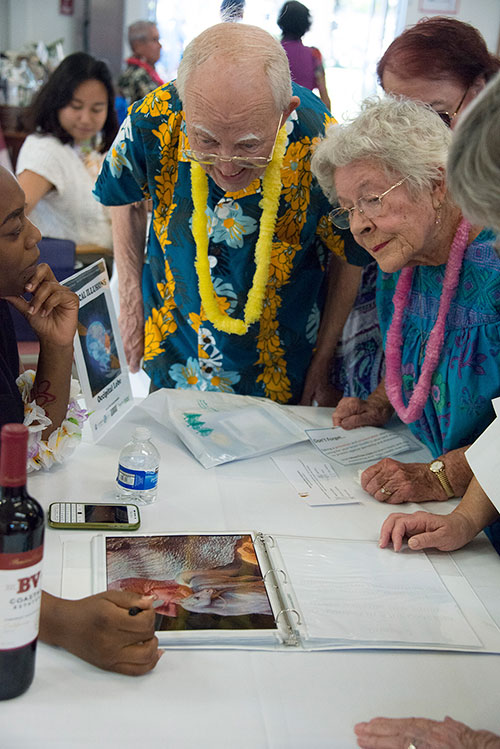Story
Dozens of seniors took to the dance floor at Valley Village Retirement Community while a live band played familiar tunes. However, dancing wasn’t the only activity designed to keep people engaged. The event, “A Dance to Remember,” also featured brain games and brain-healthy foods.
Charles Hall, vice president of Whole Brain Health, the nonprofit sponsoring the event, said the dance is a way to encourage people to sustain healthy behavioral change. It is about challenging people to use their brains in a way that they enjoy, so that the activity becomes “intrinsically motivating.”
“There are a lot of things in life that people do that they might not like to do,” he said. “We want to give people tools and info to understand their behaviors. It’s not based on ‘this is good for you do this.’ It is about ‘what do you like to do and how do we sustain that?'”
The evening kicked off Saturday with a talk by Dr. Wes Ashford, a clinical psychologist at Stanford researching Alzheimer’s Disease, as well as comments from Whole Brain Health President Stephen Cain.
Following the speakers, residents participated in a circuit of brain games ranging from trivia to optical illusions to dual tasking. Residents got check marks on their cards for completing each of the games. After all the residents had an opportunity to play the games, brain-healthy food was served. Hall, a registered nurse, described foods such blueberries are “brain-healthy.”
“We want to help people connect with the best part of their brains,” he said. “The event encompasses all the most enjoyable ways to help our brain. It creates lasting memories and helps maintain brain health, so it is literally a dance to remember and to help you remember.”
Diana Lydgate, 68, a Valley Village resident, struggled with the dual task game — a game that challenges participants to simultaneously do two tasks that are difficult for their brains to process at the same time.
As someone who taught her students about brain health, she said the games intrigued her.
“It is completely different when you are doing it,” she said. “It is arduous. You really have to be dedicated.”
Challenging one’s brain is important, she said. By forcing it to make neural connections it otherwise wouldn’t, “you link when you think.” Finding something difficult is also good for us socially, she added.
“Everybody has strengths and weaknesses. It is a wonderful thing to learn,” she said.
Once people had finished eating, the band began to play, and people slowly filtered onto the dance floor. Hall said dancing includes mobility and socialization, which is also good for the brain.
Christina Cortez, a registered nurse at Valley Village, said events like “A Dance to Remember” help keep the residents engaged.
“We all get comfortable with our surroundings,” she said. “This gets them up and active.”
Volunteers Sylvia Ow-Yang, 17, Gabriella Hanson, 17, and Natalie Ramos, 16, said they got involved with Whole Brain Health because they enjoy spending time with older people. They enjoy the interesting stories older people tell. The girls encouraged other young people to volunteer with the organization to get community service hours.
This year’s dance was the third Whole Brain Health has put on since November 2015, and Hall said his group is looking to have them more frequently — between once and twice a month. Valley Village pays Whole Brain Health $750 to put on the event, and Hall said the previous dances have raised between $300 and $600 for the organization.
Right now, he said the all-volunteer group is focused on “raising awareness” and growing incrementally in hopes of securing grants for research into brain health. To learn more about Whole Brain Health visit wholebrainhealth.org or find them on Facebook.
